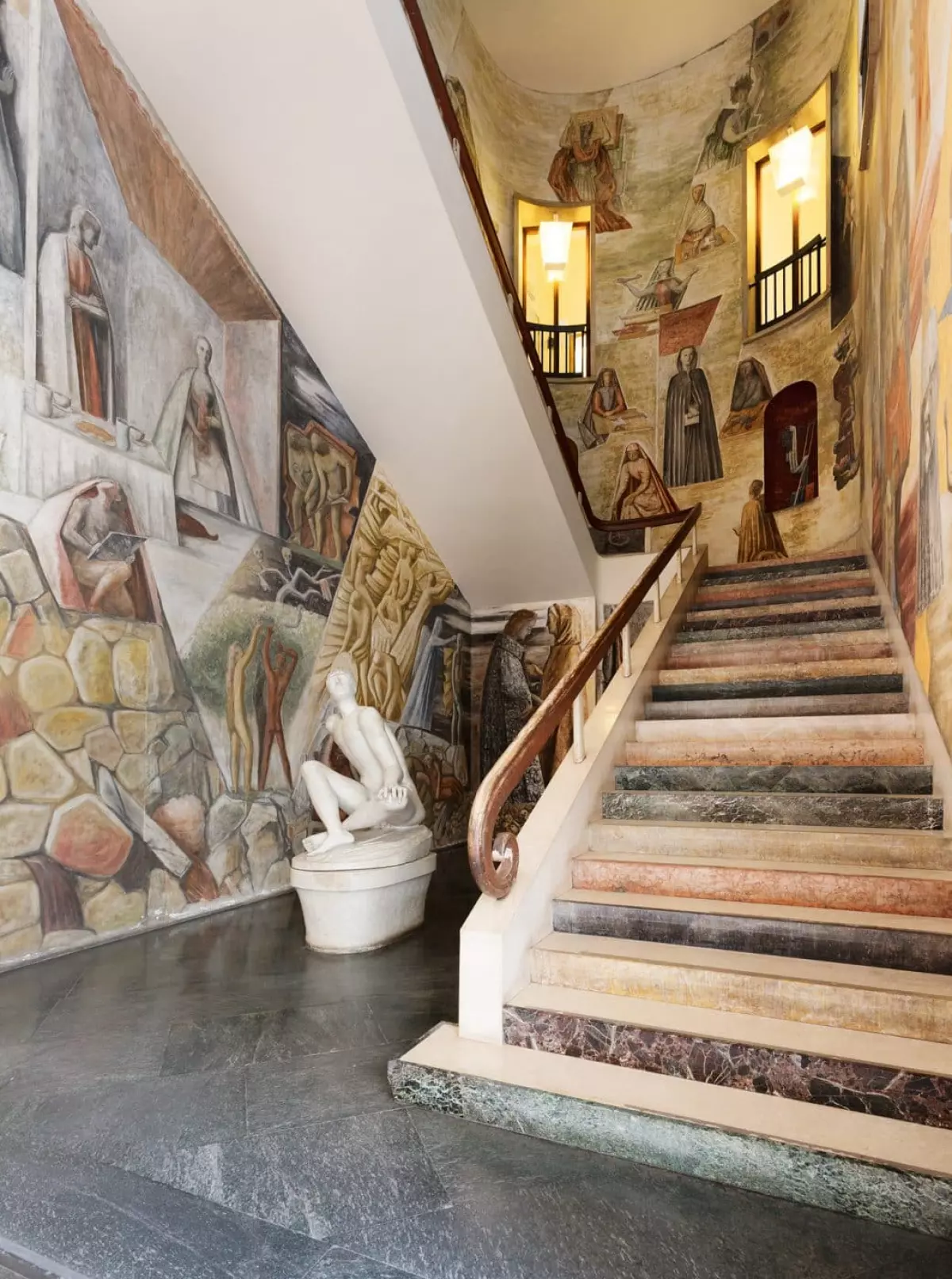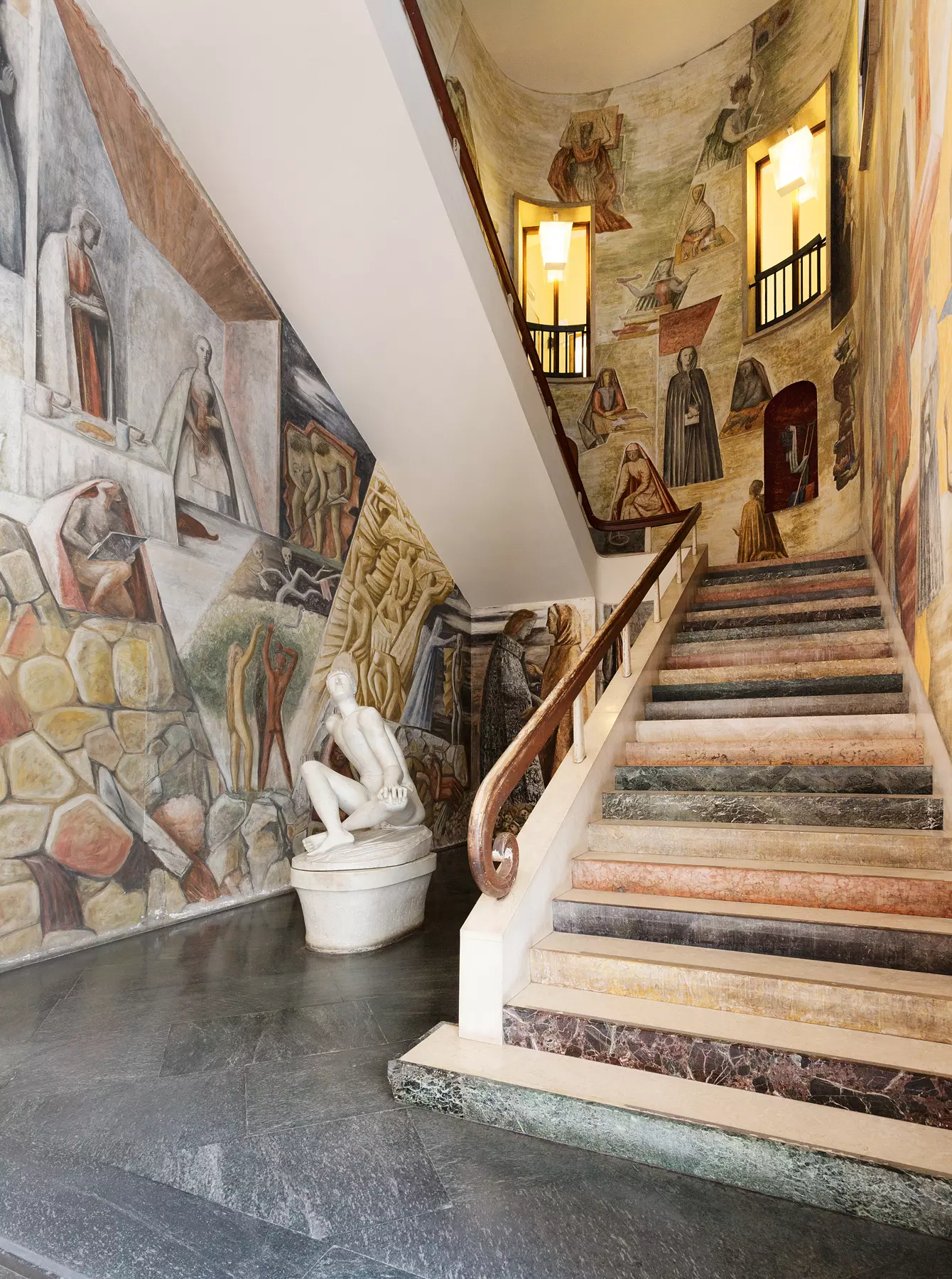Giovanni Ponti (1891-1979), known as Gio, was an influential figure in 20th-century Italian architecture and design. His contributions spanned various fields, including architecture, furniture design, curation, painting, graphic design, teaching, and promoting Italian industry. Gio Ponti's impact on Italian design is immeasurable and has left a lasting legacy.
A new book from TASCHEN, a project more than a decade in the making, showcases his achievements in each of these fields. With text by Stefano Casciani, Lisa Licitra Ponti, and Salvatore Licitra, the book presents 136 projects that highlight Gio Ponti's unparalleled creativity and vision. Brian Kish, an architecture and design historian, wrote nearly 1,000 captions for this volume, helping to contextualize Ponti's work and emphasize its contemporary relevance.
While Ponti is well-known for his architecture and furniture, the book offers a glimpse into his exceptional talent as an interior designer. The spaces showcased in the book highlight Ponti's ability to combine his innovative furniture designs with his distinct sense of creativity. These spaces serve as a testament to his endless imagination and skill in interior design.
Let's explore a few of these remarkable spaces that demonstrate Gio Ponti's prowess as an interior designer:
Palazzo del Bo, 1936-41

 Left: The central vestibule of the palazzo, which serves as the rectory of the University of Padua, is covered with murals created by Ponti with the help of his daughter Lisa Licitra Ponti and painter Fulvio Pendini. The sculpture, titled Palinuro, is by Arturo Martini. Right: The furnishings in the rector’s office were designed by Ponti and produced by Luigi Scremin. Photos by Giovanna Silva
Left: The central vestibule of the palazzo, which serves as the rectory of the University of Padua, is covered with murals created by Ponti with the help of his daughter Lisa Licitra Ponti and painter Fulvio Pendini. The sculpture, titled Palinuro, is by Arturo Martini. Right: The furnishings in the rector’s office were designed by Ponti and produced by Luigi Scremin. Photos by Giovanna Silva
Ponti redesigned the interiors of the 15th-century Palazzo del Bo, the home of the University of Padua's rectorate, from 1936 to 1941. The main staircase, known as the "Scala del Sapere" (stair of knowledge), featured multicolored marble risers, a motif that would reappear in Ponti's later projects. He collaborated with Fontana Arte to create sconces, illuminating the frescoed wall wrapping around the stairway. The rector's office, furnished with custom pieces designed by Ponti and made by Luigi Scremin, is a testament to his unique style and attention to detail.
Andrea Doria, 1949-53
One of Ponti's most successful collaborations was with artist Piero Fornasetti, and together they worked on the ocean liner Andrea Doria. Ponti's design encompassed the first-class Zodiac suite, where he immersed the space in Fornasetti's lithographic transfer prints. The deliberate disorientation created by the profusion of prints, along with Ponti's use of positive-negative color schemes, adds a touch of surrealism to the interiors. Despite the tragic sinking of the ship in 1956, Ponti's design on Andrea Doria remains a symbol of Italy's post-war renaissance.
Conte Grande, 1949-53
Ponti's refurbishment of the ocean liner Conte Grande's first-class reading room exemplifies his ability to incorporate various techniques and materials into his designs. The mottled parchment walls evoke the beauty of burled wood, while the ceiling features inset strips of anodized aluminum, elevating an industrial material to an aesthetic element. Intarsia panels depict stylized buildings, and enamel-on-glass panels by Nino Zoncada showcase flowers and butterflies. Ponti's design in the Conte Grande's reading room demonstrates his versatility and innovation in interior design.
Ceccato Apartment, 1950
In this Milan apartment, Ponti utilized Ferrara root wood, known as burled walnut, to create a reception area with surreal veining. The curved living room, marble floor set on the diagonal, and recessed shelves illuminated from behind add to the disorienting yet captivating atmosphere. Ponti's design showcases his preference for diagonally patterned floors, creating dynamic spaces. The Ceccato family, chocolatiers by trade, commissioned Ponti to design both their retail store and this apartment in 1950.
Vembi-Burroughs Offices, 1950
Ponti's design for the reception area of the Vembi-Burroughs company's offices in Genoa highlights his use of innovative materials. He incorporated his own rubber flooring, known as Fantastico P, developed in collaboration with Pirelli, allowing for large expanses of color without repetitive patterns. The office furniture, elegant yet functional, was designed by Ponti himself, while Piero Fornasetti produced upholstery fabrics depicting the company's products. Ponti's ability to infuse even workspaces with joy and amusement shines through in this design.
Villa Planchart, 1953-57
Ponti's success extended beyond Italy, as showcased by the Villa Planchart in Caracas, Venezuela. He designed this villa for art collectors Anala and Armando Planchart, incorporating tropical plants and his own furniture into the space. The leather-upholstered Mariposa armchairs and geometric sofas and chairs from Ponti's Diamond line add vibrancy to the reception area. The color-block ceiling complements the marble floor, creating a harmonious atmosphere. Ponti's attention to detail, including the tiny balcony railings depicting a bronze sliver of a moon, demonstrates his thorough approach to design.
These are just a few examples of Gio Ponti's remarkable interiors. His ability to combine his furniture designs with unique creativity and attention to detail showcases his mastery in the field of interior design. The TASCHEN book offers a comprehensive look at Ponti's achievements, presenting a journey through his transformative career. By celebrating the legacy of Gio Ponti, we gain a deeper understanding of the significant impact he had on mid-century design.












